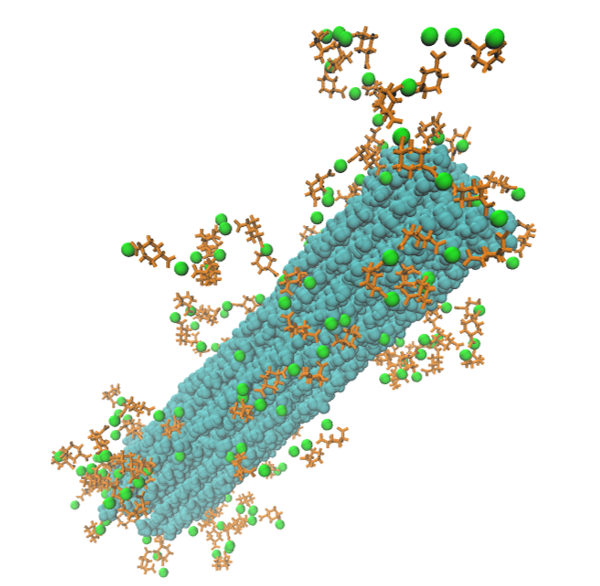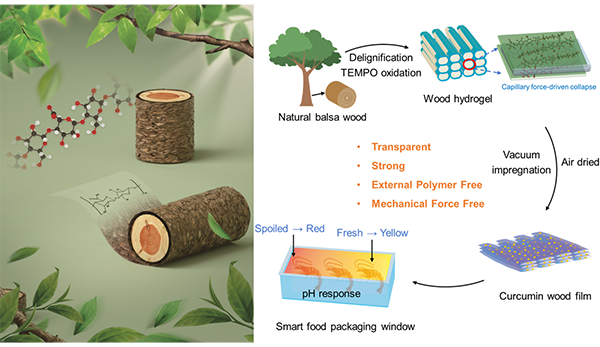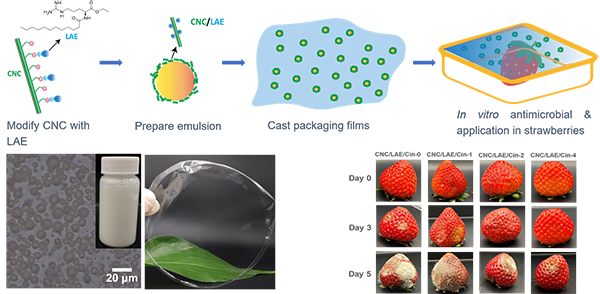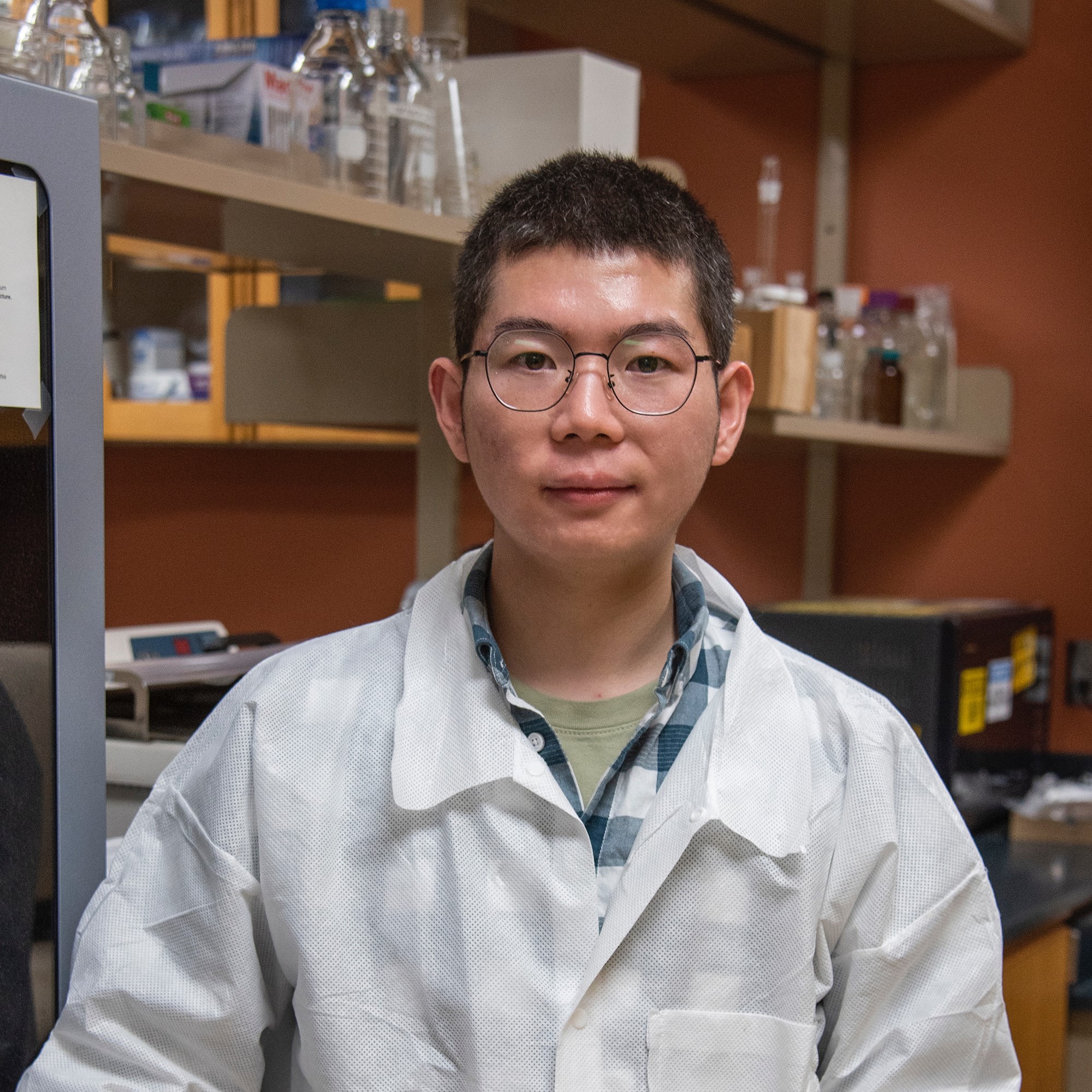Assembly of MOF on TEMPO CNF: a Molecular Dynamics Study
Templating metal-organic frameworks (MOFs) with cellulose has attracted significant interest due to the synergistic combination of cellulose’s polymer substrate nature and MOFs’ multifunctional features. However, the precise in situ assembly mechanism between them remains unclear. We used molecular dynamics simulations to explore the early-stage assembly of MOF precursors on the TEMPO CNF substrate, to provide insights into the synthesis of the cellulose-MOF hybrid materials. 
Luminescent Sensor
We developed a portable 2D sensing pad by integrating cellulose nanofibers (CNFs) with luminescent metal-organic frameworks (LMOFs) featuring aggregation-induced emission (AIE) properties. The fluorescence of the hybrid pad was quenchable upon exposure to methyl parathion. We engineered these hybrid pads prototype into a user-friendly and portable sensing kit for the detection of methyl parathion pesticide. This study introduces a practical and sustainable sensing platform for pesticide detection. For details, please refer to our published research here

Sulfonated CNF/MOF hybrid
The fragility and inferior processibility of metal-organic frameworks (MOFs) particles often restrict their functional applicability despite their high surface area and porous structure. We investigated the suitability of sulfonated cellulose nanofibrils (SCNF) as a flexible and sustainable template to hybridize MOFs. The sulfonate groups on the SCNF surface acted as potential binding sites for the nucleation of MOFs. SCNF can serve as a flexible templating substrate for designing and engineering various MOF hybrids, offering potential applications such as adsorbents.

Transparent wood packaging
We introduced a top-down and polymer-free method for engineering natural balsa wood into transparent wood film. The wood was delignified and then proceeded with 2,2,6,6- tetramethyl-1-piperidinyloxy oxidation to soften the wood structure. A robust and transparent wood film (WF) was produced by drying the wood under ambient condition without the need for additional polymers or mechanical force. Curcumin was integrated into the wood and was applied as an intelligent food packaging window to sense the freshness of shrimp based on the pH-responsive color change. For details, please refer to our published research here

Antimicrobial films
We developed antimicrobial films by incorporating cellulose nanocrystals (CNC) and cinnamaldehyde-based Pickering emulsions into polyvinyl alcohol. The food-grade cationic surfactant, ethyl lauroyl arginate (LAE), was used to modify CNC for emulsion stability improvement. The emulsion-added films led to significant inhibition of microbial growth of E. coli, S. aureus, and B. cinerea. The antimicrobial films inhibited the deterioration rate of strawberries by 52.2%. For details, please refer to our published research here

